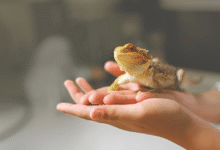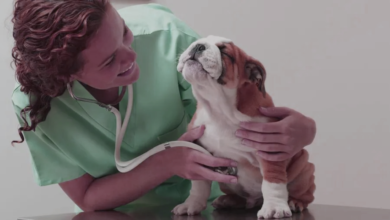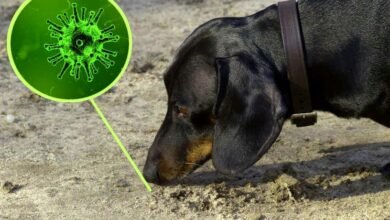
Canine Parvovirus in Pennsylvania Signs, Symptoms, and Treatments
Canine Parvovirus in Pennsylvania can be deadly Learn the signs symptoms & treatments to protect your dog from this highly contagious disease.
Canine Parvovirus (CPV) is a highly contagious and life-threatening viral disease affecting dogs, particularly puppies and unvaccinated adults. In Pennsylvania, cases of parvovirus surge in areas with high dog populations, such as shelters, kennels, and urban neighborhoods. Recognizing the early signs such as severe vomiting, bloody diarrhea, and lethargy can mean the difference between life and death. This article explores the symptoms, transmission risks, and available treatments for Canine Parvovirus in Pennsylvania, offering vital information to help pet owners protect their furry companions.
As the virus attacks rapidly dividing cells in a dog’s intestines, bone marrow, and heart, immediate veterinary intervention is crucial. While there is no cure for parvovirus, supportive treatments like IV fluids, antibiotics, and anti-nausea medications can significantly improve survival rates. Prevention through vaccination remains the most effective defense against this deadly disease. Understanding how Canine Parvovirus spreads in Pennsylvania and taking proactive measures can save countless dogs from suffering.
Canine Parvovirus in Pennsylvania
Highly Contagious and Environmentally Resistant
Canine Parvovirus is an extremely hardy virus that can survive in the environment for months, even though harsh weather conditions. It clings to surfaces such as food bowls, leashes, kennel floors, and soil, making places like dog parks, shelters, and grooming facilities high-risk zones. Unlike many other viruses, it resists common household disinfectants only bleach-based cleaners (diluted 1:32 with water) are reliably effective at killing it. This durability means that even if an infected dog is no longer present, the virus can linger and infect new animals.
Primary Transmission Through Direct and Indirect Contact
The virus spreads through Direct contact with an infected dog’s bodily fluids, particularly feces. Indirect exposure via contaminated objects (shoes, clothing, toys) or environments. Human-mediated transmission, where people unknowingly carry the virus on their hands or clothing between dogs. Puppies and unvaccinated dogs are most susceptible, but even vaccinated dogs can contract parvovirus if their immunity is compromised, or they encounter a high viral load. The virus attacks rapidly dividing cells, particularly in the intestines, leading to severe gastrointestinal damage.
Puppies and Unvaccinated Dogs at Highest Risk
Puppies aged 6 weeks to 6 months are the most vulnerable due to their underdeveloped immune systems. Maternal antibodies (passed from the mother’s milk) may protect them initially, but this immunity wanes over time, leaving a critical gap before vaccinations take full effect. Older dogs with weakened immune systems due to illness, stress, or lack of vaccinations are also at risk. Vaccination is the best defense; the core DHPP vaccine (which includes parvovirus) should be administered in a series of shots starting at 6–8 weeks of age, with boosters every 3–4 weeks until 16 weeks old. Adult dogs require regular boosters to maintain immunity.
How Canine Parvovirus Spreads in Pennsylvania
Pennsylvania’s dense urban and suburban dog populations create hotspots for Canine Parvovirus transmission. The virus spreads through Direct contact Sniffing or licking an infected dog. Contaminated environments Parks, sidewalks, and shared water bowls. Human transmission Owners carrying the virus on shoes or clothing. Wildlife exposure Foxes and coyotes can harbor and spread the virus. Outbreaks are more common in areas with low vaccination rates or overcrowded shelters. Puppies adopted from high-risk environments should be quarantined and monitored closely.
Signs and Symptoms of Canine Parvovirus
Early detection of Canine Parvovirus is critical for effective treatment. The virus incubates for three to seven days before symptoms appear, during which an infected dog can unknowingly spread it to others. The most common signs include Severe, bloody diarrhea Often foul-smelling and indicative of intestinal damage. Persistent vomiting Leads to rapid dehydration and electrolyte imbalances. Lethargy and weakness Dogs may refuse to eat or drink due to nausea. Fever or hypothermia Fluctuating body temperature signals systemic infection.
Weight loss and dehydration Sunken eyes and dry gums are emergency warning signs. In severe cases, Canine Parvovirus attacks the heart muscles in young puppies, leading to sudden death. Without prompt treatment, the mortality rate can exceed 90%, making immediate veterinary care essential.
Diagnosis and Veterinary Treatment
Diagnostic Process for Canine Parvovirus
Veterinarians in Pennsylvania use a combination of methods to confirm parvovirus infection ELISA (Enzyme-Linked Immunosorbent Assay) Test This rapid fecal test detects parvovirus antigens and provides results within minutes, making it the primary diagnostic tool. Complete Blood Count (CBC) A blood test often reveals severely low white blood cell counts (leukopenia), a key indicator of parvovirus as the virus attacks bone marrow. Clinical Symptoms & History – Vets assess signs like bloody diarrhea, vomiting, and lethargy, along with vaccination status and potential exposure risks.
Critical Supportive Treatments
Since no antiviral drug exists for parvovirus, treatment focuses on aggressive supportive care IV Fluid Therapy – Corrects life-threatening dehydration and electrolyte imbalances caused by vomiting/diarrhea. Fluids often contain glucose to maintain energy. Anti-Nausea & Anti-Diarrheal Medications – Drugs like maropitant (Cerenia®) control vomiting, while GI protectants soothe intestinal damage. Broad-Spectrum Antibiotics – Prevent deadly secondary infections (e.g., sepsis) since the virus compromises the gut barrier, allowing bacteria into the bloodstream.
Hospitalization & Prognosis Factors
24/7 Hospital Care is typically needed for 5–7 days to monitor vitals, administer medications, and provide nutritional support (e.g., feeding tubes if the dog won’t eat). Survival Rates exceed 80–90% with early, intensive treatment, but drop drastically if care is delayed beyond the first 48 hours of symptoms. Post-Recovery Care includes a bland diet, probiotics, and isolation from other dogs for 2–4 weeks as the pet may still shed the virus.
Preventing Canine Parvovirus in Pennsylvania
Vaccination is the most effective way to prevent Canine Parvovirus. Puppies should receive their first shots at six to eight weeks, followed by boosters every three weeks until 16 weeks of age. Adult dogs need regular boosters as recommended by their vet. Additional preventive measures include Avoiding high-risk areas until a puppy is fully vaccinated. Disinfecting surfaces with bleach-based cleaners. Isolating infected dogs to prevent outbreaks.
Read More: How Telehealth is Changing Pet Healthcare in 2025
Conclusion
Canine Parvovirus in Pennsylvania remains a serious and potentially fatal threat to dogs, particularly puppies and unvaccinated adults. The virus spreads rapidly in environments where dogs congregate, making awareness and prevention crucial for pet owners. Recognizing early symptoms such as severe vomiting, bloody diarrhea, and extreme lethargy can mean the difference between life and death, as immediate veterinary intervention significantly improves survival rates. While treatment options like IV fluids, antibiotics, and anti-nausea medications can help dogs recover, prevention through vaccination remains the most effective way to combat this deadly disease.
For dog owners in Pennsylvania, staying informed about Canine Parvovirus outbreaks and maintaining up-to-date vaccinations are essential steps in safeguarding their pets. Avoiding high-risk areas, practicing proper hygiene, and isolating infected dogs can further reduce the spread of the virus. By taking these proactive measures, pet owners can help protect their furry companions and contribute to reducing the prevalence of Canine Parvovirus in Pennsylvania. Together, awareness, prevention, and swift action can save countless dogs from this devastating illness.
FAQs
How do dogs get parvovirus?
Dogs contract parvovirus through direct contact with infected dogs or contaminated environments, including feces, soil, and shared bowls.
Can vaccinated dogs get parvo?
While rare, vaccinated dogs can still contract parvovirus if their immunity is weak or they’re exposed to a high viral load.
How long does parvo survive in the environment?
The virus can live on surfaces for months, especially in shaded, moist areas. Bleach solutions are effective for disinfection.
What is the survival rate for parvo with treatment?
With early and aggressive veterinary care, survival rates range from 68% to 92%. Untreated cases are often fatal.
Can humans get parvovirus from dogs?
No, Canine Parvovirus does not infect humans, but they can spread it to other dogs via contaminated clothing or shoes.







